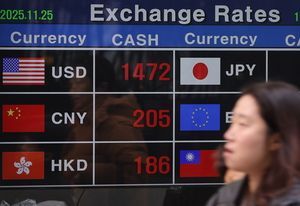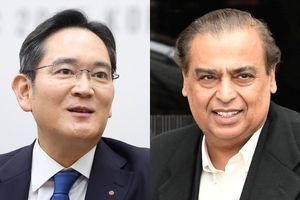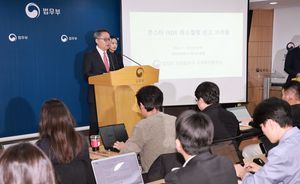
Amid Kim Yo Jong mentioning a new response and signaling further provocations, the U.S.-South Korea Nuclear Consultative Group (NCG) delegation made their first-ever visit to the South Korean Army’s Missile Strategy Command.
It is evaluated that the U.S. and South Korea showed their deterrence by visiting the Missile Strategy Command which is the core capability of their consistent insistence on the end of the nuclear threats from North Korea.
Cho Chang Rae, Deputy Minister of National Defense of the Republic of Korea, and Vipin Narang, Acting Assistant Secretary of Defense for Space Policy at the U.S. Department of Defense, announced that they jointly visited the Missile Strategy Command in conjunction with the 3rd NCG meeting on the 11th.
Earlier, the two had held the third NCG meeting in Seoul the day before and announced that they had completed a review of a joint guideline document to strengthen the alliance’s nuclear deterrence policy.
The U.S. and South Korea launched the NCG as a follow-up measure to the Washington Declaration prepared in conjunction with last year’s summit meeting.
It is evaluated that the visit to the Missile Strategy Command has a significant symbolic meaning as the NCG is concretizing the plan to integrate South Korean conventional power and American Conventional-Nuclear Integration (CNI) with the Missile Strategy Command playing a key role in the related plan.
Indeed, the South Korean Ministry of National Defense said, “This visit took place for the first time between South Korea and the United States to confirm the South’s advanced conventional capabilities that can contribute to conventional-nuclear integration — a key task of the NCG.”
It added, “Through this visit, the U.S.-South Korea NCG delegation has enhanced their understanding of the capabilities and posture of South Korean advanced missiles.”
It is explained that they confirmed that the capabilities of the U.S.-South Korea alliance are ready to respond to North Korean attacks, including nuclear ones.
Commander of the Army’s Missile Strategy Command Kim Kyu Ha emphasized, “South Korean missile capabilities are an excellent weapon system with the world’s highest level of accuracy and destructive power,” and “It will play a key role in the integration of U.S.-South Korea nuclear and conventional forces.”
Minister of National Defense Shin Won Sik visited the Missile Strategy Command last year and said, “Your only role is to fatally strike the enemy’s heart and head.” It was a roundabout emphasis that the Missile Strategy Command could play a decisive role in eliminating the North Korean leadership in an emergency.

Cho and Narang also discussed the best ways to utilize South Korea’s capabilities in deterring North Korean nuclear and missile threats.
Cho stated, “The strengthening of South Korea’s advanced conventional capabilities is greatly contributing to deterrence,” adding “With the launch of the strategic command, a key unit in South Korea related to the U.S.-South Korea CNI, its capabilities will evolve further.”
Narang expressed support for the establishment of South Korea’s strategic command by stating, “It was a good opportunity to confirm South Korea’s advanced conventional capabilities on site, which demonstrate the significant progress of the South Korean weapons system.”
He emphasized, “The U.S.’s extended deterrence commitment to the Republic of Korea is permanent and ironclad,” adding “As stated in the Washington Declaration, if North Korea launches a nuclear attack, it will face an immediate, overwhelming, and decisive response.”
Considering the recent heightened tension on the Korean Peninsula due to North Korea’s release of waste balloons, it is interpreted as a roundabout statement of the existing position that the North Korean regime will come to an end if they resort to nuclear warfare.









Most Commented